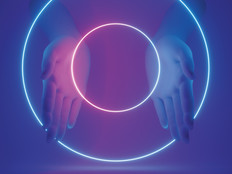Monitors for a New Millennium
Display technology is beginning to reflect the convergence that is taking place between entertainment and computing. In the future, our computers will entertain us more and our entertainment devices will be more like computers. But even though this future technology is still far from entering our daily lives, many computer vendors are focusing on improving more traditional display technologies and are unveiling a new generation of products.
One Billion Colors
Hewlett-Packard and DreamWorks Animation have recently announced a new display technology that is capable of displaying 1 billion colors. In a unique two-year collaboration, the two companies have developed the HP DreamColor display, which they say will cost considerably less than today’s high-end studio-quality LCD displays. One billion colors is a significant boost from today’s widely used 24-bit color monitors, which are capable of displaying 16.7 million colors per pixel.
The unreleased display will be the first to offer a true 30-bit color technology, incorporated in an LED-backlit LCD. According to HP, this combination guarantees to provide accurate, consistent and predictable color at all stages of the production process.
"For decades, storytellers have struggled to manage color in an accurate and consistent manner," says Jeffrey Katzenberg, chief executive officer and director of DreamWorks Animation. "Quite simply, when we make a movie about a big green ogre, our concern is that our ogre is the same color of green throughout the film. HP has truly changed the game with its new display, giving DreamWorks Animation full visual fidelity across the board for the first time."
This product was specially designed for the broadcast film and video post-production, animation and graphic arts fields, where it is crucial to obtain rich and consistent colors, such as darker blacks and true whites. Some doubt that the new technology will deliver a dramatic improvement in performance.
Chris Chinnock, president of the research firm Insight Media, is one of those who are skeptical about HP’s claims. While the 30-bit resolution will allow for better gradation between the color levels, Chinnock doubts the technology will be able to increase the color gamut of a display. "It will make the displays much more accurate in being able to display colors and gray-scale properly," says Chinnock. "Whether the colors look more vibrant and saturated will depend more on the backlight technology HP uses.”
‘Curve’ Your Enthusiasm
The unconventional-looking first generation of curved DLP displays might just be the next big thing in the gaming industry. NEC was one of the first to launch a curvy model, presented at this year’s CES show in Las Vegas. NEC's curved DLP display delivers a screen resolution of 2880x900 and a response time of 0.02 milliseconds.
Another interesting feature of NEC’s model is a 180-degree horizontal field of view, which can be especially beneficial for gaming and other simulation applications. With an NTSC color gamut of more than 170 percent, the manufacturer says the screen is also ideal for medical digital imaging and video editing. The prices for these monitors is near $5,000, but that is expected to decrease as the market expands.
In Touch
An interesting approach to touchscreen technology was introduced by the New Zealand–based company NextWindow, which recently unveiled its unique line of optical touchscreens, the largest of which is 120 inches wide. Their technology is based on two optical sensors located at the top corners of the screen. The sensors track the movement of objects close to the screen's surface by detecting the interruption of an infrared light source.
These displays are “multi-touchable,” allowing users to manipulate on-screen objects using more than one finger at a time to resize or rotate items such as pictures or windows. The monitors do not require any special surface coating, making do with a clear-glass touch surface. According to the company, the clear-glass surface provides for a clearer image and inhibits scratches and other marks. Based on this optical technology, NextWindow has also developed an interactive whiteboard, a digital canvas that responds to any stylus, including fingers, brushes or any wooden or plastic objects.
T-Mobile has introduced a monitor that has left many wondering whether the latest display technology inspired movie makers in Hollywood or whether it was the other way around. Rightly nicknamed the Minority Report screen, the company’s multitouch screen was one of the more impressive displays presented at this year's CeBIT IT fair in Hanover, Germany. The huge monitor allowed users to manipulate large on-screen items using their fingers, while an integrated application supported resizing, moving and flipping any of the objects displayed.
Getting a Boost
Another notable monitor introduced earlier this year was LG Technology’s 19-inch Flatron L197WH, which delivers a 2ms response time and an astounding contrast ratio of 10,000:1 — twice as high as the company’s previous model, the L226WTQ. LG’s proprietary f-Engine image-processing system, which provides more vibrant and accurate colors by using signal processing techniques and dynamic backlight, made the boost possible.
Out of the Ordinary
When developing the monitors of the future, companies are also focusing on features beyond quality and interactive ability. The Netherlands-based giant Fujitsu Siemens has recently launched a zero-watt display, which does not consume any power in standby mode, thanks to a special relay in the monitor’s power adapter that is controlled by the PC itself. When the computer switches to “power save” mode, the monitor is automatically disconnected, reconnecting again only when it detects a video signal, which is the PC’s wake-up call.
Monitors are also becoming increasingly popular for outdoor use, mainly for digital and interactive advertising. Targeting this market, the Taiwan-based company Collevo has developed a 65-inch LCD touchscreen display with a 1920x1080 resolution, a contrast ratio of 2,000:1, and a 6ms response time. The display is waterproof and dust resistant, and, according to the company, was specifically designed to be used outdoors, for applications such as as digital street billboards.
Iddo Genuth is the editor of the electronic magazine The Future of Things at www.thefutureofthings.com.






